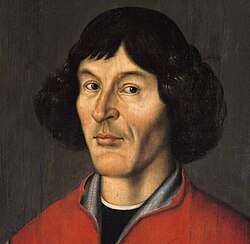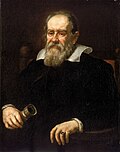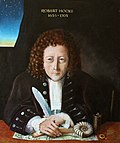Philosophiæ Naturalis Principia Mathematica
The Philosophiæ Naturalis Principia Mathematica (English: Mathematical Principles of Natural Philosophy) is a trilogy, written by Isaac Newton and published on 6 July 1687.
The three-book work describes physics and mathematics. It states Newton's laws of motion and the derivation of Kepler's Laws, and observations on gravity.
+{{{1}}}−{{{2}}}
Philosophiæ Naturalis Principia Mathematica Media
Portrait of Sir Isaac Newton (1643–1727), author of the Principia, by Godfrey Kneller (1689)
Newton's proof of Kepler's second law, as described in the book. If a continuous centripetal force (red arrow) is considered on the planet during its orbit, the area of the triangles defined by the path of the planet will be the same. This is true for any fixed time interval. When the interval tends to zero, the force can be considered instantaneous. (Click image for a detailed description).
Titlepage and frontispiece of the third edition, London, 1726 (John Rylands Library, Manchester)
Nicolaus Copernicus (1473–1543) formulated a heliocentric model of the universe.
Galileo Galilei (1564–1642), a champion of Copernicanism, worked on kinematics and classical mechanics.
Modern artist’s impression of the English polymath Robert Hooke (1635–1703)









